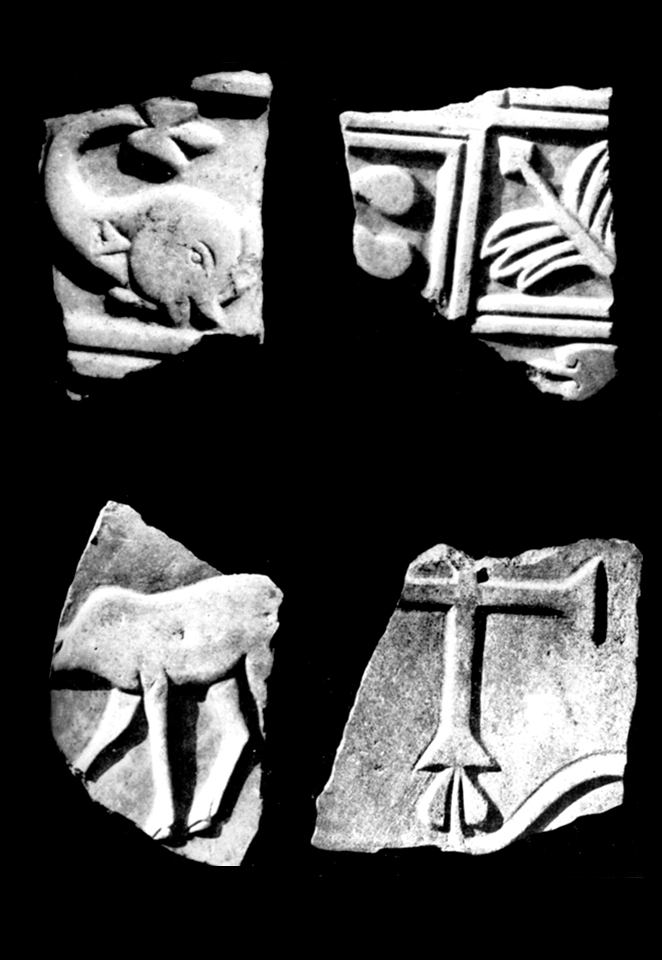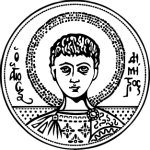
The temple of Hagia Sophia from NW. Carte postale 19th to 20th century.Source: Old photos of Thessaloniki https://www.facebook.com/groups/oldthessaloniki/

Reconstruction of the floor plan of the early Christian basilica under the temple of Hagia Sophia.Source: Θεοχαρίδου Κ. (1994). Η αρχιτεκτονική του Ναού της Αγίας Σοφίας στη Θεσσαλονίκη, Αθήνα: Ταμείο Αρχαιολογικών Πόρων και Απαλλοτριώσεων: εικ. 2, σ. 35.

View of the dig of the early Christian basilica.Source: Θεοχαρίδου Κ. (1994). Η αρχιτεκτονική του Ναού της Αγίας Σοφίας στη Θεσσαλονίκη, Αθήνα: Ταμείο Αρχαιολογικών Πόρων και Απαλλοτριώσεων: σ. 44.

North wall of the early Christian basilica.Source: Τσιούμη, Χρ. – Ευ. Κουρκουτίδου (1981). Χρονικά Β2, Αρχαιολογικό Δελτίο, 36: πίν. 204 β, σ. 307.

Underground entrance at the east courtyard of the early Cristian basilica.Source: Τσιούμη, Χρ. και Ευ. Κουρκουτίδου. (1981). Χρονικά Β2, Αρχαιολογικό Δελτίο, 36: σ. 307, πίν. 204 γ.

Parts of marble closure slabs from the niche of the early Christian basilica found during the excavation.Source: Πελεκανίδης Στ. και Δροσογιάννη Φ. (1963). Χρονικά Β2, Αρχαιολογικό Δελτίο, 18: πιν. 269.

Preserved column of the “Nymphaeum” at the courtyard of St. John the Baptist.Source: Photo by Eirini Margarita Tzemopoulou.

TodayPhoto by Eirini Margarita Tzemopoulou.

TodayPhoto by Eirini Margarita Tzemopoulou.



